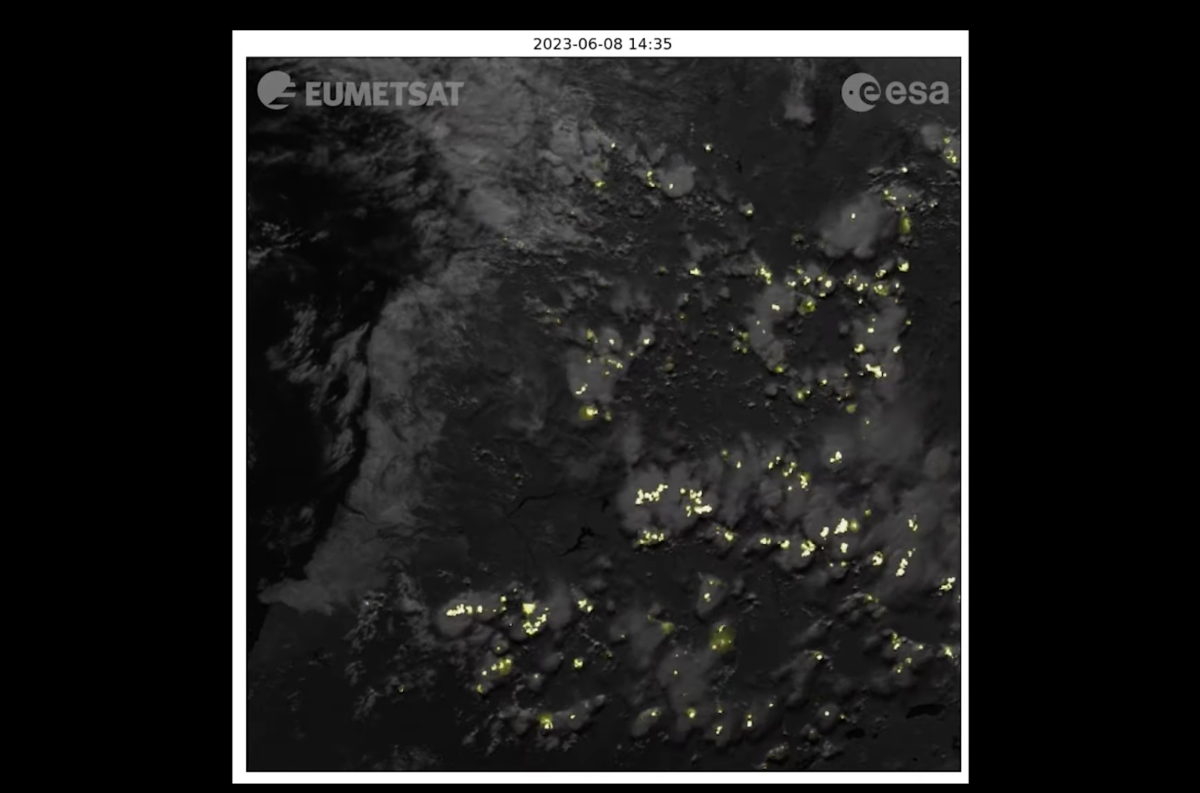Lightning can be seen sparking across the most active strike region on Earth in spectacular footage from space.
The footage was taken from the European Space Agency's (ESA) Lightning Imager, which is aboard the European Organization for the Exploitation of Meteorological Satellites' Meteosat weather satellites. The lightning is shown creeping across central Africa in large clusters over several days.
The Lightning Imager can detect lightning during both day and night from a distance of 22,300 miles. It has four cameras, each observing Europe, Africa, the Middle East and parts of South America, and is capable of taking up to 1,000 images per second.
"The animations show the instrument's ability to accurately and effectively detect lightning activity over the whole area of the cameras' field of view, which covers 84 percent of the Earth disc," Simonetta Cheli, ESA's director of Earth Observation Programs, said in a statement from the agency.

Lightning is an electrostatic discharge that occurs between the atmosphere and the ground, releasing around a gigajoule of energy with each strike and heating the air to 50,000 degrees Fahrenheit for a split second.
Lightning occurs most often in tropical and subtropical latitudes, and Africa is the continent with the most frequent strikes. Central Africa, in particular, is a hot spot for lightning. Eight of the 10 most struck regions are in the Democratic Republic of Congo, making the country the most thunderstorm-prone country on Earth, says MeteoSwiss, Switzerland's Federal Office for Meteorology and Climatology. The Kabare district sees 205 lightning strikes per square kilometer (0.38 square miles) every year.
Lightning can be extremely dangerous, as it can fatally strike humans or animals directly or cause large fires. About 10 percent of people struck by lightning die, and there were 444 lightning strike deaths in the U.S. from 2006 to 2021. If a plane is struck, its electrical equipment can be damaged or disrupted.
It's hoped that this Lightning Imager can be combined with weather forecasting to enable better predictions of lightning storms, which may help keep planes away from at-risk areas.

Detecting and analyzing lightning data will provide valuable support in the study of short-term weather forecasts and for understanding the effects of such phenomena on climate change. At the same time, the Lightning Imager will play a key role in air traffic safety, given that lightning poses a high risk to an aircraft's onboard instrumentation.
"Severe storms are often preceded by abrupt changes in lightning activity. By observing these changes in activity, Lightning Imager data will give weather forecasters additional confidence in their forecasts of severe storms," said Phil Evans, director general of the European Organization for the Exploitation of Meteorological Satellites, in the statement.
"When these data are used in conjunction with the high-resolution data from the Flexible Combined Imager, weather forecasters will be better able to track the development of severe storms and have a longer lead-in time to warn authorities and communities," he said.
The ESA also hopes this instrument will help in understanding the consequences of lightning and climate change's interactions.
Do you have a science story to share with Newsweek? Do you have a question about lightning? Let us know via science@newsweek.com.
Uncommon Knowledge
Newsweek is committed to challenging conventional wisdom and finding connections in the search for common ground.
Newsweek is committed to challenging conventional wisdom and finding connections in the search for common ground.
About the writer
Jess Thomson is a Newsweek Science Reporter based in London UK. Her focus is reporting on science, technology and healthcare. ... Read more
To read how Newsweek uses AI as a newsroom tool, Click here.






